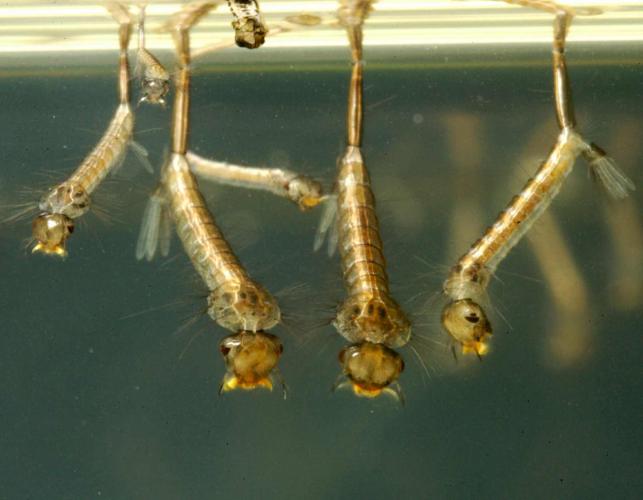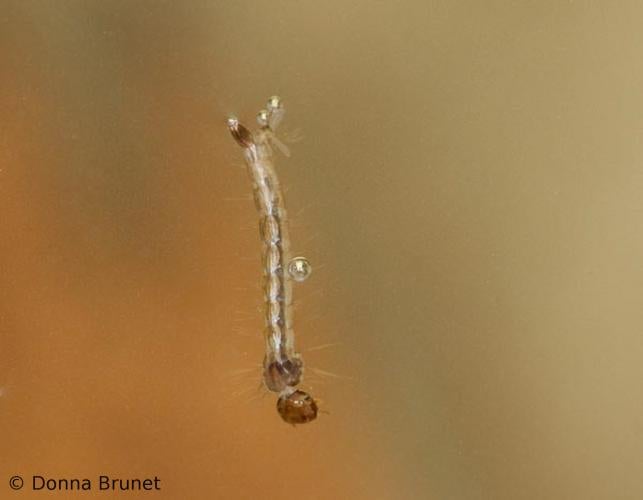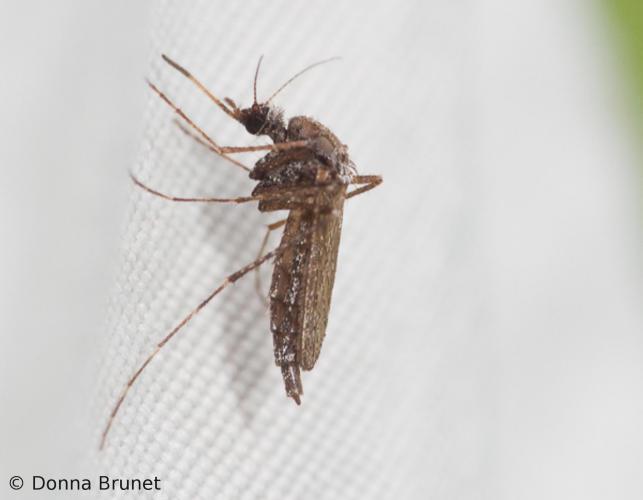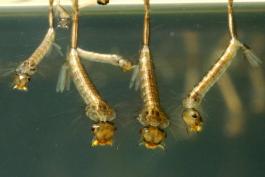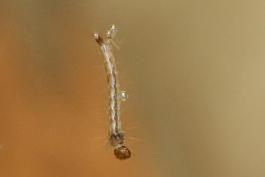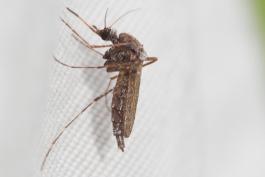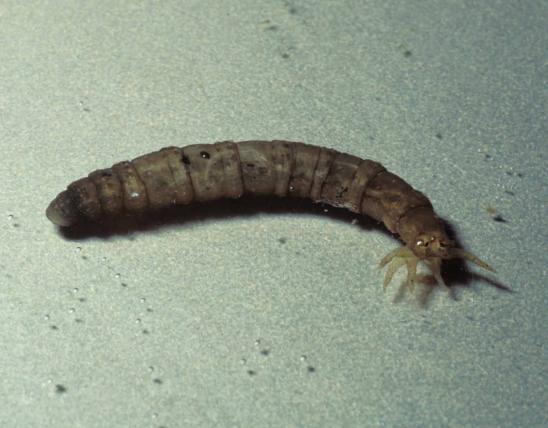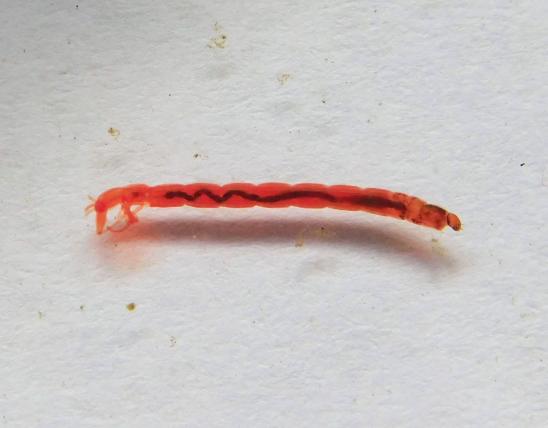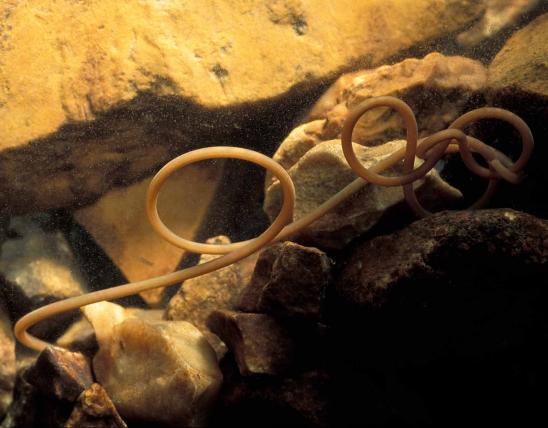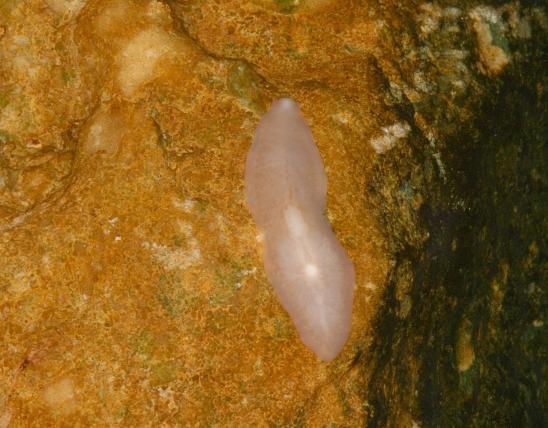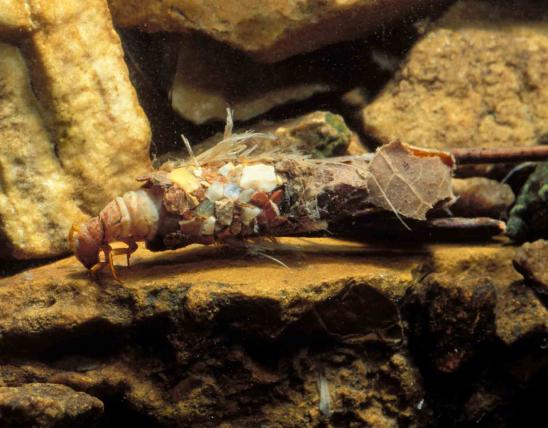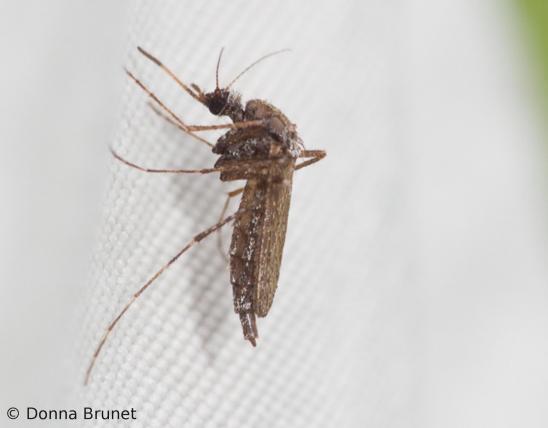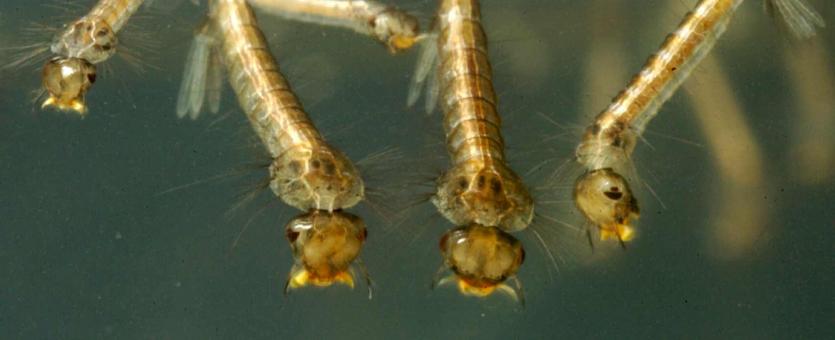
Mosquito larvae, called “wrigglers,” are aquatic, with a large head and thorax and narrow, wormlike abdomen; they typically hang just below the water surface, breathing air through tubes at the end of the abdomen. When disturbed, they wriggle downward.
The pupae, called “tumblers,” are curled like a comma and also hang just under the water surface, breathing through air tubes.
Adult mosquitoes are small flies that look a lot like their cousins in the fly family, the crane flies and midges. Female mosquitoes, however, drink blood from vertebrate animals.
Adults have one pair of transparent wings; upon close inspection, you can see a fringe of hairs and scales along the edges and veins of the wings. The legs are long, and there is a long proboscis (pro-BAH-siss) that is used like a straw for drinking. The antennae are featherlike in males.
Key identifiers of larval mosquitoes:
- Large head and thorax; narrow, wormlike abdomen.
- Hang just below the water surface, breathing air through tubes at the end of the abdomen.
- When disturbed, they wriggle or squirm downward with jerking movements.
- Pupal stage is comma-shaped; also hangs just under the water surface.
- Aquatic, usually in still or stagnant water, including swampy areas, puddles, gutters, and discarded car tires.
Length: less than ¼ to more than ½ inch.

Statewide.
Habitat and Conservation
All mosquitoes need standing or quiet water in which to lay their eggs. Adults of different species have different habitats and active times. Some prevail near floodwaters or temporary pools, others in houses, in irrigated pastures, marshes, or streams. Some species bite in the day, while others are most active at dawn, dusk, or night. Eliminating standing water is an effective way of reducing mosquitoes. Follow pesticide directions carefully. Educate yourself about the many ways to manage mosquitoes.
Food
Larvae eat algae and other microscopic organisms that abound in water, filtering them out via brushes surrounding their mouth. A few types prey on other mosquito larvae. Adult males feed on flower nectar; they do not drink blood. Except for a few species, adult females need the protein in blood in order to reproduce. Some require the blood of only certain types of animals; others can profit from a wide range of animals. Some, of course, drink the blood of humans.
Status
Worldwide, mosquitoes transmit the viruses for many diseases that affect humans and animals. Several of these diseases are disabling or deadly. Mosquitoes have a tremendous economic impact, and mosquito control is a top global health priority.
Life Cycle
After a blood meal, females rest a few days and develop 100-400 or more eggs. These they usually deposit on the water, flying close and tapping the abdomen onto the surface. Eggs hatch in a few days and spend about a week as “wrigglers.” The pupal stage lasts 2-3 days, after which adults emerge, climbing out onto the water surface. Adults mate within a few days, and females begin seeking blood. The life cycle usually takes a few weeks, but when conditions are right, it can take only 10 days.
Human Connections
Worldwide, mosquitoes transmit the viruses for West Nile, Zika, yellow fever, dengue fever, and more; the parasites that cause malaria and elephantiasis; and the bacterium that causes tularemia. They transmit heartworms to dogs.
The most effective way to control mosquitoes is to eliminate breeding sites: standing water in clogged gutters, old tires, flowerpots, ditches, and so on. Reduce bushy vegetation where adult mosquitoes rest. Use a repellent, such as one containing DEET.
The economic and historical impact of mosquitoes, and the diseases they transmit, it staggering. Historically, the avoidance of “malarial” swamps determined where towns did or didn’t develop. But fish love to eat mosquito larvae, which is good news for anglers as well as aquarium enthusiasts.
Ecosystem Connections
Although some mosquitoes prey on other mosquitoes, most are parasites. Some disease-causing microorganisms need mosquitoes to complete their life cycle.
Mosquito larvae are an important food for many aquatic animals, including fish, and birds devour adult mosquitoes on the wing.
